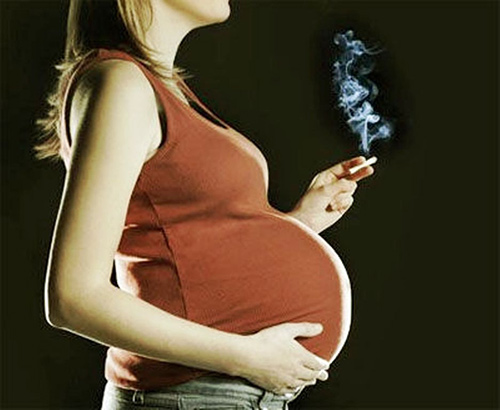
A collaborative research team led by scientists at the Johns Hopkins Bloomberg School of Public Health found that blood taken from children up to the age of five contains molecular evidence about whether their mothers smoked during pregnancy. The epigenetic study (“Presence of an Epigenetic Signature of Prenatal Cigarette Smoke Exposure in Childhood”), published online in Environmental Research, offers strong evidence that environmental exposures that go as far back as the womb may continue to remain in the body and potentially affect someone's health for years after birth.
The study also suggests that with further research it could be possible to detect exposures to other potential toxins during pregnancy that are less evident such as to chemicals in plastics, undetected infections, or contaminants in drinking water. Ultimately, the hope would be to link these exposures to chronic diseases such as autism, obesity, or heart disease to better understand how diseases develop and possibly help prevent them.
“If you have a blood sample, you may be able to ask research questions that you could never ask before,” says study leader M. Daniele Fallin, Ph.D., the Sylvia and Harold Halpert Professor and Chair of the Bloomberg School's department of mental health. “Smoking is one thing. But if this turns out to be possible for other kinds of exposures, this could be a paradigm shift. We have long known that the body is an accumulator of past exposures—evidence of lead exposure lives on in our bones, for example. But we did not know that something as easy to collect as blood could contain evidence of exposures not only during your life but prenatally. That's what makes this so compelling.”
Two years ago, another group of researchers looked at newborn cord blood and found that the amount of DNA methylation at 26 locations on the genome was correlated with whether that baby's mother had smoked during pregnancy. For this study, Dr. Fallin and her colleagues took the experiment a step further. They tested the blood of 531 preschoolers from six different sites in the United States and also spoke to their mothers about whether or not they smoked during pregnancy.
The team again analyzed methylation patterns at the same 26 locations in the genome and found that 81% of the time their test was able to accurately predict prenatal smoking exposure. It was not previously known whether this epigenetic signature would still be around as many as five years later, but the blood still contained this molecular memory.
It is possible, the researchers say, that the signature is also related to exposure to secondhand smoke after birth, but that would not account for all of it since at birth, before they could be exposed to secondhand smoke, those whose mothers smoked while pregnant already had the signature.
Dr. Fallin says she hopes this area of research has broader reach. With smoking, she notes, it is relatively easy to determine whether someone was exposed to cigarette smoking in the womb: You simply ask the mother or ask someone whether their mother smoked while she was pregnant. But exposures to other toxins are more difficult to tease out. For many, the mother may not know whether she was exposed.
“If epigenetic signatures can be found for other environmental exposures, these could provide clues to how certain prenatal exposures affect health and potentially decades into life,” says co-author Christine Ladd-Acosta, Ph.D., an assistant professor of epidemiology at the Bloomberg School.
Dr. Fallin, who also directs the Bloomberg School's Wendy Klag Center for Autism & Developmental Disabilities, says she is specifically hoping to determine whether in utero exposures are related to the development of autism. She points out that it remains unclear whether these epigenetic biomarkers are a direct cause of chronic diseases later in life or what else they may indicate.



